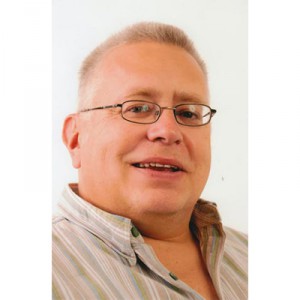 ATSA executive officer, Chris Sparks, is generally upbeat about the progress of the NDIS. Sparks delivered its latest implications in a strong message to ATSA member businesses following the 2015 AGM where he emphasised the importance of transparency in pricing and new business opportunities. As well, Sparks spoke about the more controversial proposals relating to OT accreditation, the ‘dignity of risk’ debate and the role for ATSA’s Industry Code of Practice. On a less positive note he expressed his disappointment at the failure of the new Turnbull government to appoint a Minister for Disability and Ageing.
ATSA executive officer, Chris Sparks, is generally upbeat about the progress of the NDIS. Sparks delivered its latest implications in a strong message to ATSA member businesses following the 2015 AGM where he emphasised the importance of transparency in pricing and new business opportunities. As well, Sparks spoke about the more controversial proposals relating to OT accreditation, the ‘dignity of risk’ debate and the role for ATSA’s Industry Code of Practice. On a less positive note he expressed his disappointment at the failure of the new Turnbull government to appoint a Minister for Disability and Ageing.
He said more product and pricing information needs to be available in the public domain and there was insufficient information available on suppliers’ websites at the moment. The NDIA is building sophisticated ITC systems and suppliers found inflating prices to NDIS participants risk losing their provider status.
Reviewing the NDIS strategy numbers he highlighted the free market model (with 37% of projected spend – estimated value $341.3M) and the pool model tender (26% of projected spend – estimated value $240.2M) as being most critical to ATSA’s mainstream membership. He said the free market model offered the most potential for alliances between AT retailers and major equipment wholesalers, particularly in remote and regional communities. “The NDIA’s breakdown of categories gives us a good idea of the potential market size, excluding aged care, and potentially represents a great opportunity for the industry.” The regulatory model which includes guide dogs, orthoses and prosthesis, he said, were less relevant to ATSA’s membership. The tender/panel comprising continence and HEN products produced some lively comment from the audience, particularly when it came to continence items, valued at $230M, a figure that was surprising, with one supplier noting the ‘wastage’ from the category with Sparks agreeing to take a closer look at the numbers.
When it comes to ‘sourcing’ to generate savings of $160M+, it was continence heading the list. There were other areas mentioned where savings could be had, for example, the stand-up wheelchair, which for those able to use them often eliminated the need for expensive home/workplace modifications. “This is something the NDIA clearly understands and how the practical value of these products cannot be underestimated.”
Expanding product offerings was an avenue for growth, with assistive technology for sports, outdoor activities and recreation now funded and potentially specialised gym equipment as well. “There is real demand for these products” Sparks said. Scheduled maintenance was another possible revenue stream along with product hire and reissue. “When people are on holidays it helps if they can hire equipment in popular tourist spots and so avoid having to add it to the luggage when travelling. “While the NDIS won’t fund holidays it is likely to fund the disability supports needed when someone goes on holidays.”
Finally Sparks broached the subject of accreditation for allied health professionals which was an evolving topic within the NDIA, although accreditation for suppliers has yet to be pursued further, he said. Also, the NDIS was developing a national framework to safeguard the interests of NDIS participants which may carry implications for AT suppliers. However, Sparks cautioned that whatever scheme was introduced it should not be protectionist or patronising. “People with disability have the right to take informed risks to lead the life that they choose”.
“We have come a long way but it will all change rapidly with ACT, New South Wales and Victoria leading the way. ACT’s rollout is complete in July 2016, NSW is expected to have the entire state covered in two years, with Victoria scheduled to have completed the rollout by 2017/18.” There were obvious complications in the Northern Territory and some parts of Queensland and Western Australia due to their remote and regional areas. “We need different and innovative approaches to offer supports to outback communities as opposed to those in metropolitan cities.”
